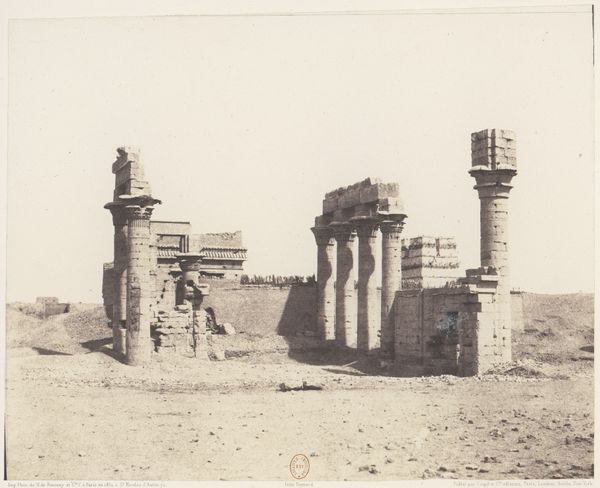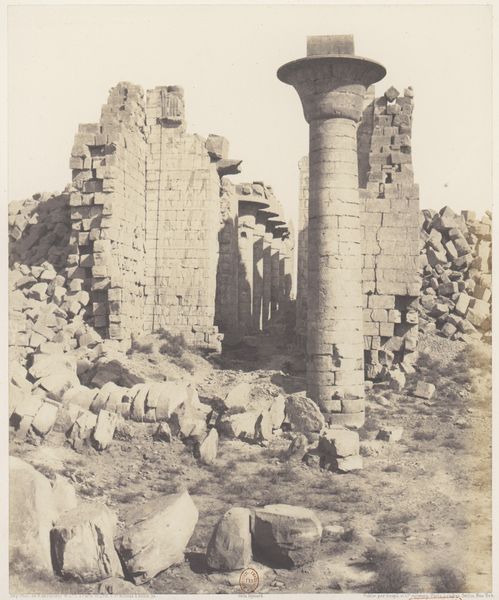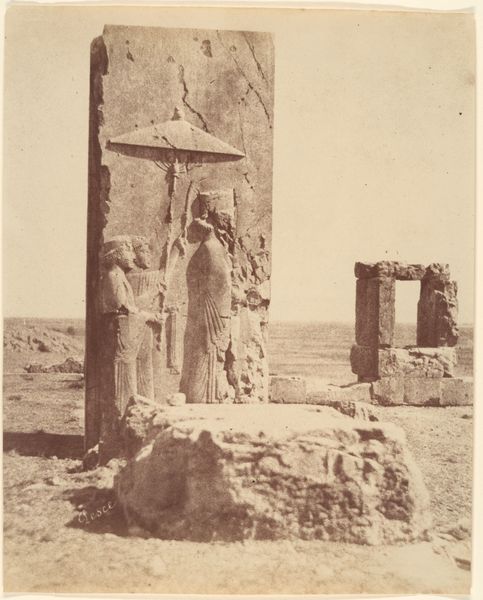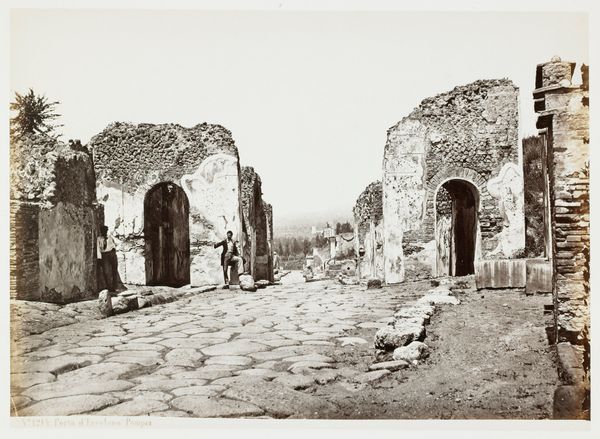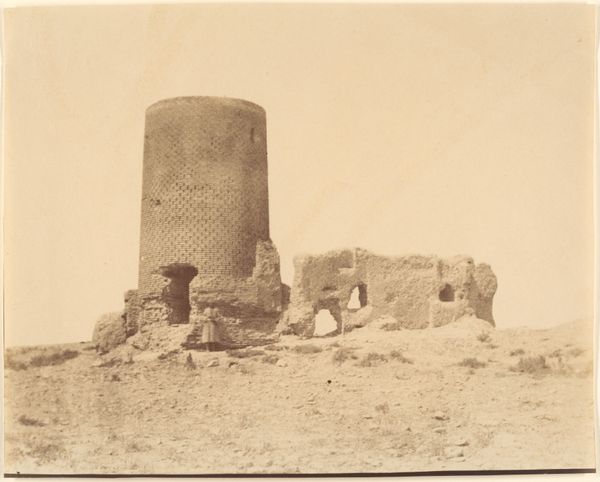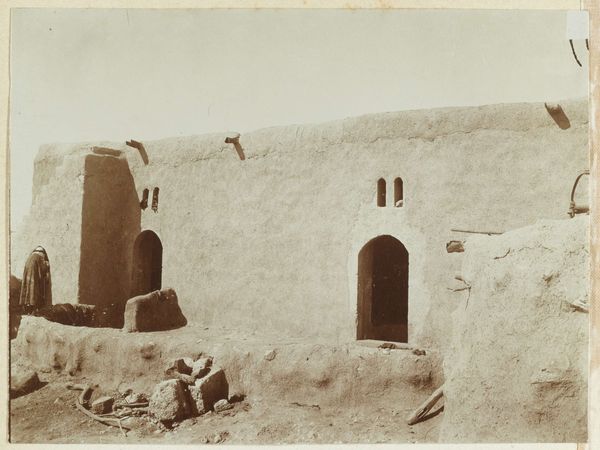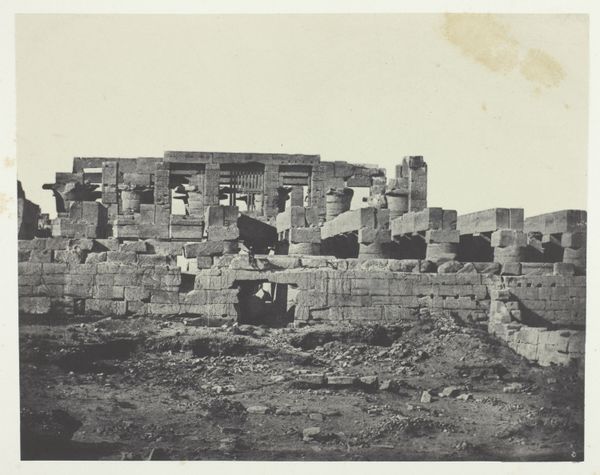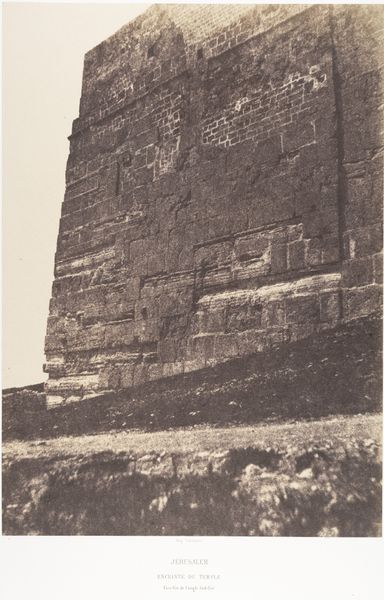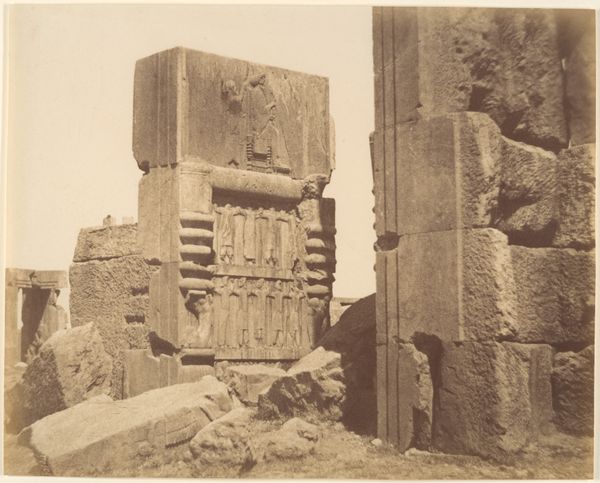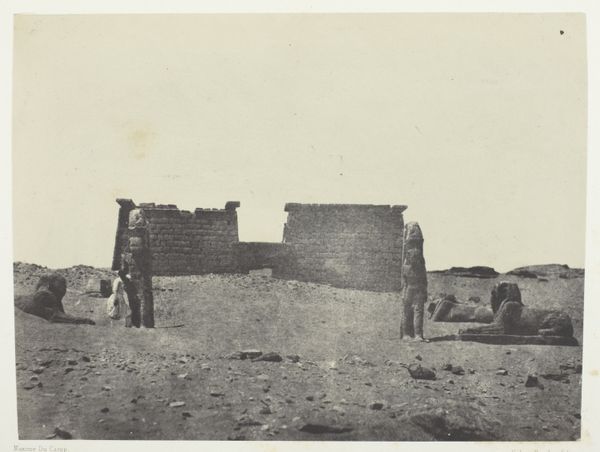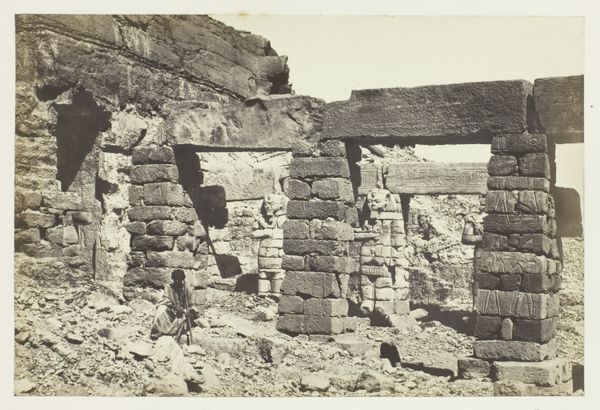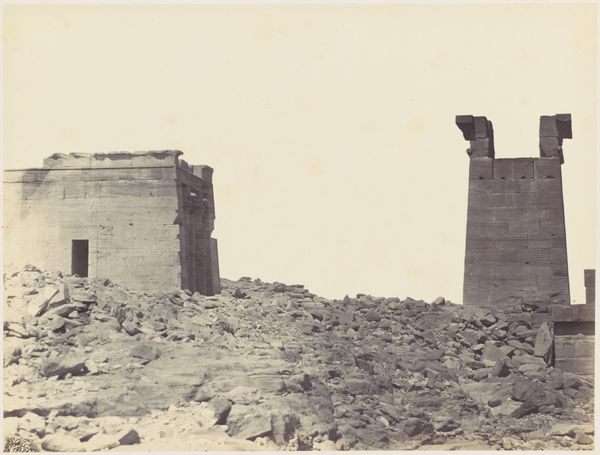
Louksor (Thèbes), Construction Antérieure - Pylône, Colosses et Obélisque 1851 - 1852
0:00
0:00
photography, architecture
#
landscape
#
ancient-egyptian-art
#
photography
#
ancient-mediterranean
#
architecture
Dimensions: 23.8 x 29.9 cm. (9 3/8 x 11 3/4 in.)
Copyright: Public Domain
Curator: Fèlex Teynard’s photograph, taken between 1851 and 1852, titled "Louksor (Thèbes), Construction Antérieure - Pylône, Colosses et Obélisque," is just breathtaking. It captures a fragment of the Luxor Temple with imposing scale, a visual poem etched in light and shadow. How does it strike you? Editor: It's impressive, certainly. The scale is immense, and the detail preserved in this early photograph is remarkable. It's a very matter-of-fact representation of a powerful place, almost like a document. What do you see in it? Curator: What immediately strikes me is the photographic process itself. Look closely at the surfaces – the rough-hewn blocks, the eroded sculptures. The image is a testament to both the labor involved in constructing Luxor and the labor involved in creating the photograph itself. Consider the photographer’s darkroom techniques, the materials used, the social conditions that permitted this expedition. Editor: So, you’re drawn to the means of production? It's not just the impressive ancient architecture that holds your interest? Curator: Exactly! The photograph isn’t just a passive record; it’s an active participant in constructing meaning. It brings ancient Egyptian labor to our modern consumption. The act of capturing it, producing this single photograph, and then the many copies it produced for wider dissemination; the exchange and the markets this generates... This is also what the image carries. What kind of exchanges between past and present do you see in this work? Editor: I hadn't considered it that way, seeing the photo as part of an ongoing material exchange between civilizations. Thinking about it, the image allowed Europeans to "consume" ancient Egypt from a distance. Curator: Precisely! The photograph transforms this site of immense ancient labor into a commodity, circulated and consumed within a European context. Editor: It changes the way I see the piece completely. Thank you. Curator: And thank you for opening new horizons to me with your insights. It's always about material conditions, and, indeed, immaterial value of human connection across time, achieved by a simple image.
Comments
No comments
Be the first to comment and join the conversation on the ultimate creative platform.
